Discover 20 hidden attractions, cool sights, and unusual things to do in Novgorod (Russia). Don't miss out on these must-see attractions: Yuriev Monastery, Millennium of Russia, and Cathedral of St. Sophia. Also, be sure to include Novgorod Kremlin in your itinerary.
Below, you can find the list of the most amazing places you should visit in Novgorod (Novgorod).
Table of Contents
Yuriev Monastery
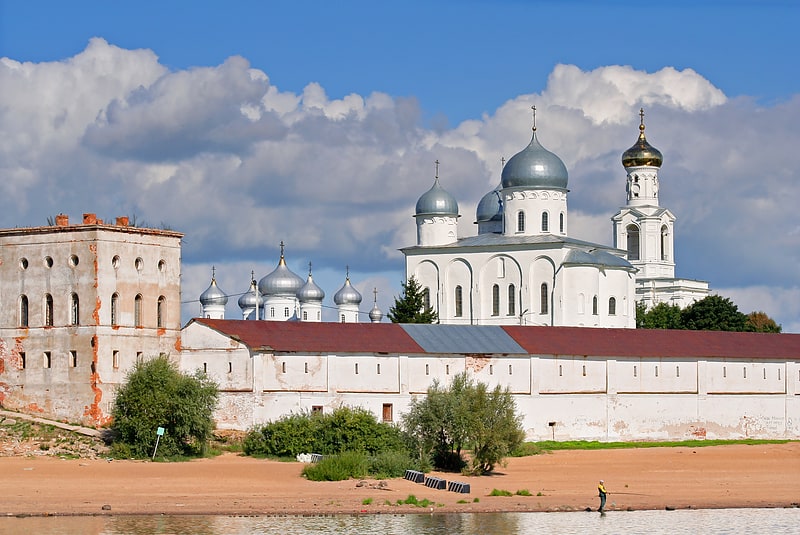
Also known as: Юрьев монастырь
Silver-domed medieval Orthodox monastery. The St. George's Monastery is usually cited as Russia's oldest monastery. It stands in 5 kilometers south of Novgorod on the left bank of the Volkhov River near where it flows out of Lake Ilmen. The monastery used to be the most important in the medieval Novgorod Republic. It is part of the World Heritage Site named Historic Monuments of Novgorod and Surroundings.[1]
Address: Yuryevskoye Hwy., 10, 173007 Veliky Novgorod
Millennium of Russia
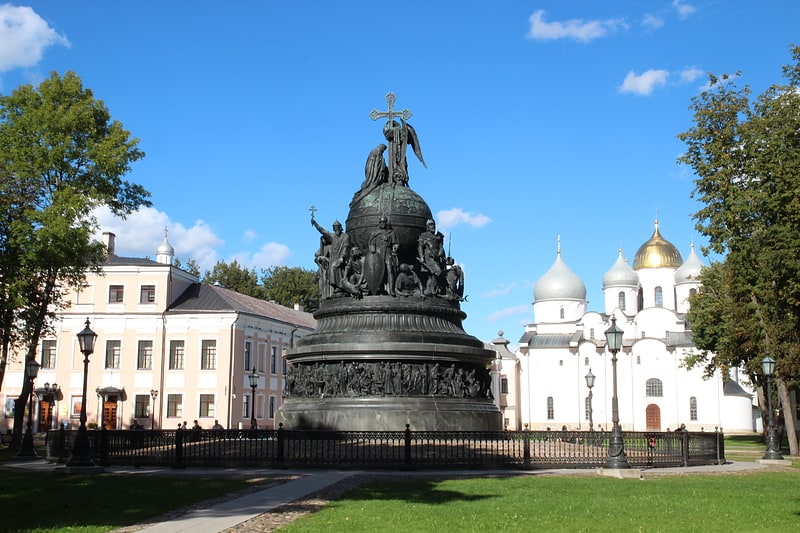
Also known as: Тысячелетие России
Large bronze monument from 1862. The Millennium of Russia is a bronze monument in the Novgorod Kremlin. It was erected in 1862 to celebrate the millennium of Rurik's arrival to Novgorod, an event traditionally taken as a starting point of the history of Russian statehood.[2]
Address: Novrogod Kremlin, Novgorod
Cathedral of St. Sophia
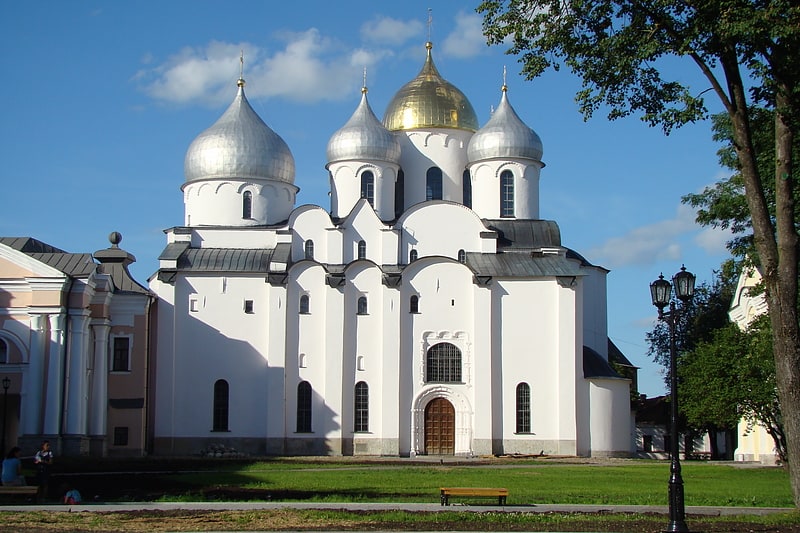
Also known as: Софийский собор
11th-century church with icons and mosaics. The Cathedral of Holy Wisdom in Veliky Novgorod is the cathedral church of the Metropolitan of Novgorod and the mother church of the Novgorodian Eparchy.[3]
Address: Новгородский Кремль, 173007 Великий Новгород
Novgorod Kremlin
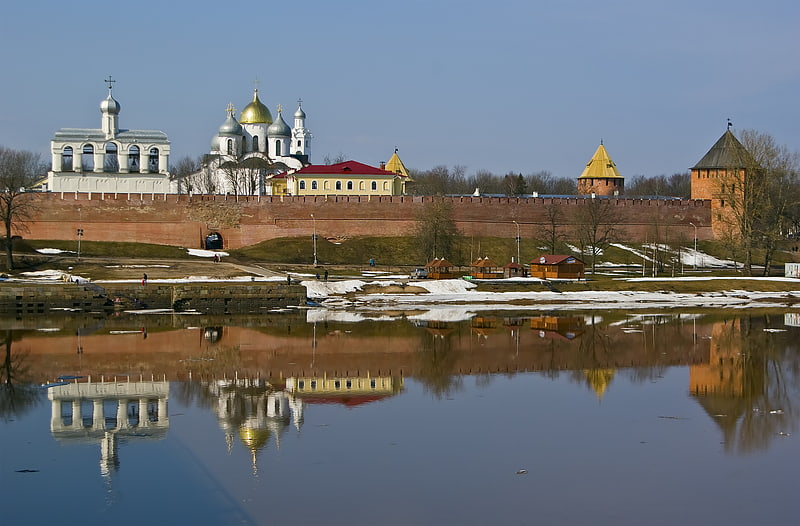
Also known as: Новгородский детинец
Monument in Veliky Novgorod, Russia. The Novgorod Detinets, also known as the Novgorod Kremlin, is a fortified complex in Veliky Novgorod, Russia. It stands on the left bank of the Volkhov River about two miles north of where it empties out of Lake Ilmen.[4]
Address: пл. Кремля, 1, 173007 Великий Новгород
Nereditsa Church

Also known as: Церковь Спаса на Нередице
Church in Russia. The Saviour Church on Nereditsa Hill near Novgorod is a 12th-century Orthodox church dedicated to the feast of the Saviour's Transfiguration.
The church, consecrated in 1198, became world-famous both for its remarkable state of exterior preservation and for the best preserved set of pre-Mongol wall paintings in the Russian Empire. During the World War II it was selected as a target for artillery fire and was reduced to rubble.
The post-war reconstruction of the Nereditsa Church is on the World Heritage list as a part of object 604 Historic Monuments of Novgorod and Surroundings. The building has been designated an architectural monument of federal significance (#5310113002).
It is located in Novgorodsky District of Novgorod Oblast, Russia, 1.5 kilometres (0.93 mi) south of Veliky Novgorod in the village of Spas-Nereditsy on the right bank of the Maly Volkhovets River on a small Nereditsa Hill next to the Rurik hillfort.[5]
Saint Nicholas Cathedral
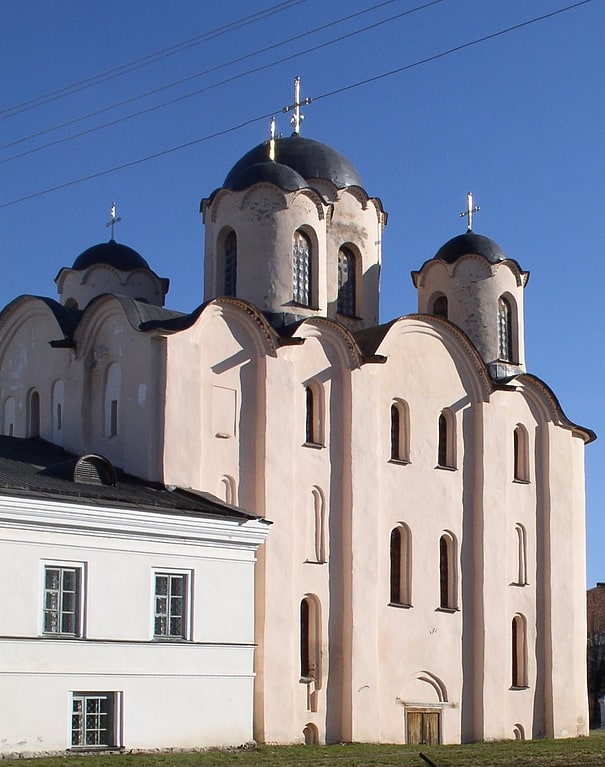
Also known as: Николо-Дворищенский собор
Building in Veliky Novgorod, Russia. Saint Nicholas Cathedral, founded by Mstislav the Great in 1113 and consecrated in 1136, is the oldest surviving building in the central part of Veliky Novgorod after the Saint Sophia Cathedral.
The Saint Nicholas Cathedral is on the World Heritage list as a part of object 604 Historic Monuments of Novgorod and Surroundings. The cathedral was designated by the Russian government as an architectural monument of federal significance (#5310046007).[6]
Address: Никольская, 3Б, Novgorod
Rurikovo Gorodische
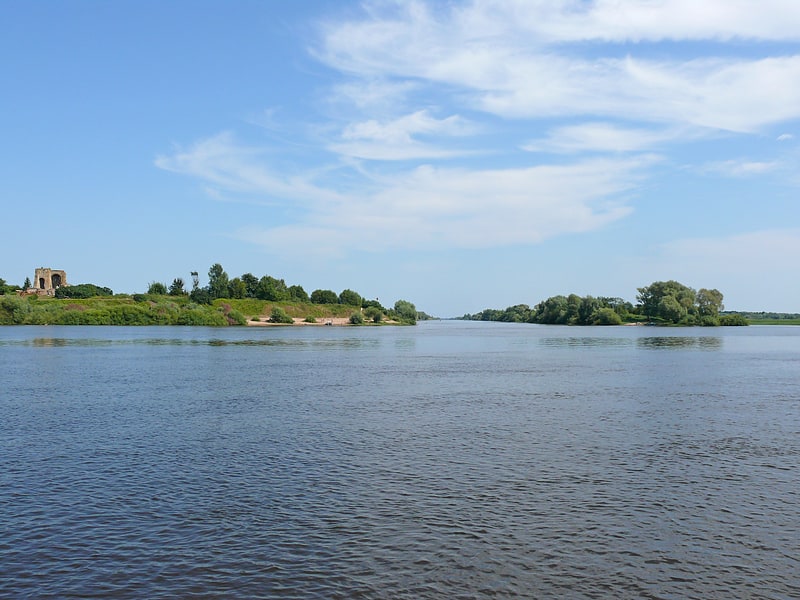
Also known as: Рюриково городище
Historical landmark in Veliky Novgorod, Russia. Rurikovo Gorodische, the primary settlement in the area known in Scandinavian sources as Holmgård, was the 9th century predecessor of Veliky Novgorod. The archaeological site is 2 km to the south of the current city center, across from Yuriev Monastery where the Volkhov River flows out of Lake Ilmen. Part of the Novgorod World Heritage site, it includes the original residence of the princes of Novgorod, connected with the names of many famous political figures of ancient Russia.[7]
Zverin Monastery
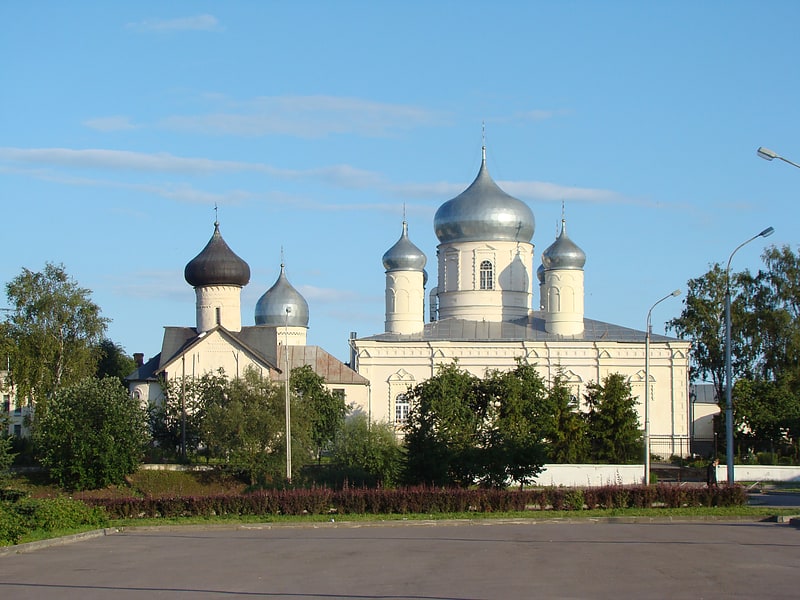
Also known as: Зверин-Покровский монастырь
Monastery. The Zverin Monastery is a monastery in Veliky Novgorod, located on the left bank of the Volkhov River, north of the Kremlin. This is one of the oldest Russian monasteries, founded before the 12th century.
The Zverin Monastery is on the World Heritage list as a part of object 604 Historic Monuments of Novgorod and Surroundings. The building was designated an architectural monument of federal significance (#5310024000).[8]
Transfiguration Church in Kovalyovo
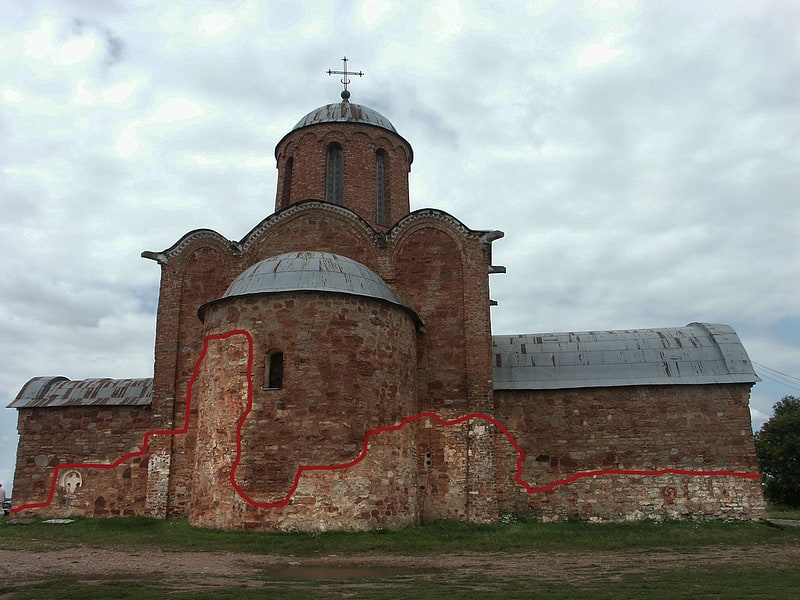
Also known as: Церковь Спаса на Ковалёве
Russian orthodox church in Russia. The Transfiguration Church in Kovalyovo in Novgorodsky District, Novgorod Oblast, Russia, was built around 1345. The church was notable for the frescoes created in the 14th century. The church was destroyed to the ground during World War II and restored in 1970. Fragments of the frescoes have since been reconstructed. The church is located 4 kilometres east of Veliky Novgorod, on the right bank of the Maly Volkhovets River. The Transfiguration Church in Kovalyovo was designated an architectural monument of federal significance.[9]
Yaroslav's Court

Also known as: Ярославово дворище
Tourist attraction in Veliky Novgorod, Russia. Yaroslav's Court was the princely compound in the city of Novgorod the Great. Today it is roughly the area around the Trade Mart, the St. Nicholas Cathedral, the Church of St. Procopius, and the Church of the Myrrh-bearing Women. The Trade Mart renovated and heavily modified in the sixteenth and seventeenth centuries, is all that is left of the princely palace itself. The prince also had a compound called the Riurik's Court south of the marketside of the city.
Yaroslav's Court is named after Yaroslav the Wise who, while prince of Novgorod in 988–1015, built a palace there. The Novgorodian veche often met in front of Yaroslav's Court and in 1224 several pagan sorcerers were burned at the stake there.
According to the traditional scholarship, after the Novgorodians evicted Prince Vsevolod Mstislavich in 1136, Novgorod began electing their princes and forbade them from holding land in Novgorod. Yaroslav's Court then ceased to be a princely compound and the prince resided at Riurik's Court. Between 1113 and 1136, the Saint Nicholas Cathedral was built at the court. The cathedral is intact and is the second oldest building in Novgorod after the Saint Sophia Cathedral.[10]
Address: Ильина ул., 173007 Великий Новгород
Antoniev Monastery
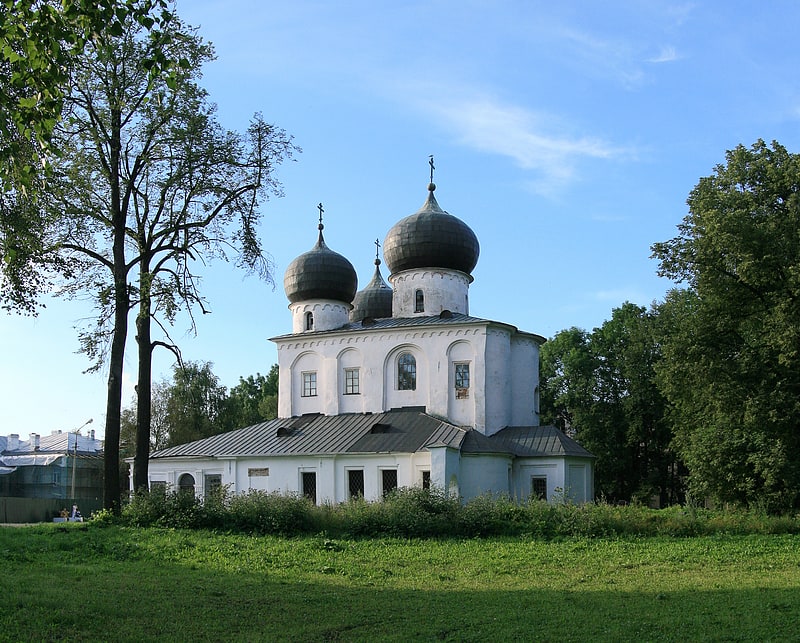
Also known as: Антониев монастырь
Monastery. The Antoniev Monastery rivalled the Yuriev Monastery as the most important monastery of medieval Novgorod the Great. It stands along the right bank of the Volkhov River north of the city centre and forms part of the Historic Monuments of Novgorod and Surroundings, a World Heritage Site.
The monastery was founded in 1117 by St Anthony of Rome, who, according to legend, flew to Novgorod from Rome on a rock. Antonii was consecrated hegumen of the monastery in 1131 by Archbishop Nifont and was buried beneath a large slab to the right of the altar in the same church.
The Church of the Nativity of the Mother of God, like the Church of St. George in the Yuriev Monastery, is one of the few three-domed churches in Russia. It is also one of the few buildings in Russia which survived from the 12th century. It was founded by Antonii in 1117 and completed in 1119. There are some frescoes from the Middle Ages still extant, most notably in the apse, but most are from the sixteenth or seventeenth centuries and are in some disrepair.
The monastery is currently part of the Novgorod United Museum-Preserve and has not been returned to the Russian Orthodox Church.[11]
Church of St. Paraskevi
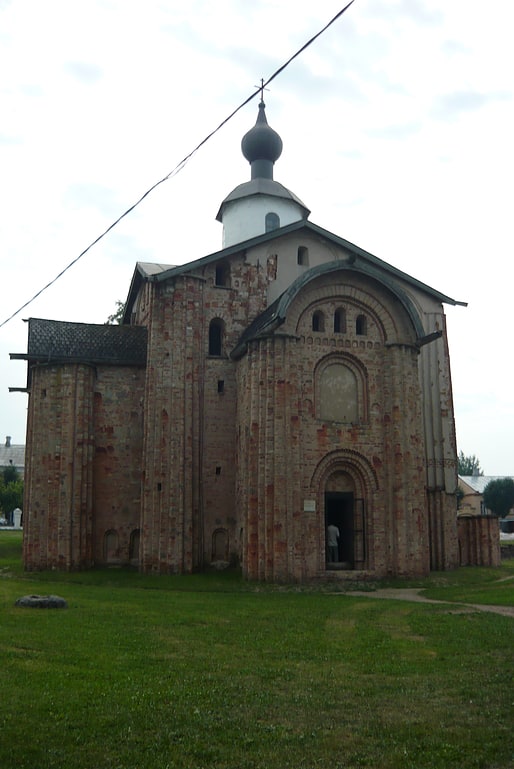
Also known as: Церковь Параскевы-Пятницы на Торгу
Church in Veliky Novgorod, Russia. Church of St. Paraskevi in Veliky Novgorod is one of Russia's oldest churches, dating from 1207. The church is located at the city center, at the former Yaroslav's Court and the market square. It is currently a museum.
The Church of St. Paraskevi is on the World Heritage list as a part of object 604 Historic Monuments of Novgorod and Surroundings. The building was designated an architectural monument of federal significance (#5310046012).[12]
Address: 5Б Большая Московская улица, Novgorod
Desyatinny Monastery
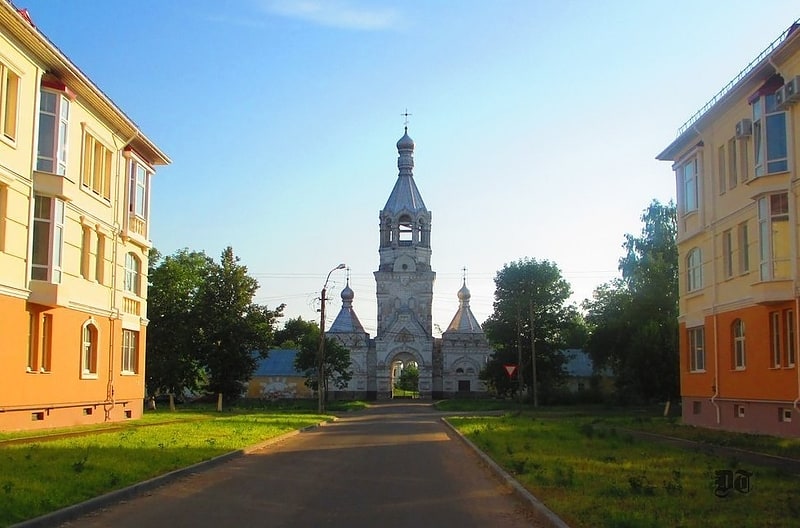
Also known as: Десятинный монастырь
Monastery in Veliky Novgorod, Russia. The Desyatinny Monastery is an inactive monastery or convent in Veliky Novgorod, one of eight ancient monasteries of Novgorod Republic.
The Desyatinny Monastery now has a regular square-shaped perimeter. The monastery's complex was developed over a lengthy period and now includes objects constructed in periods from the 14th to the 20th centuries. It was finally completed at the beginning of the 20th century but was closed in 1918 by the Soviet government. Some buildings, including both churches and part of the monastery wall, were lost in the 20th century during World War II and the anti-religious campaign, with the result that the monastery is preserved fragmentarily.
Never considered particularly important, it was subjected to rebuilding many times. Built to symbolize and immortalize the miracle of historical significance for the Novgorod Republic, until the present day, the monastery in fact has undertaken certain social functions affecting Novgorodian society. Its history is a story of ups and downs, of ruin and reconstruction. Almost nothing in the present monastery's exterior suggests how ancient the monastery really is.[13]
Historic Monuments of Novgorod and Surroundings
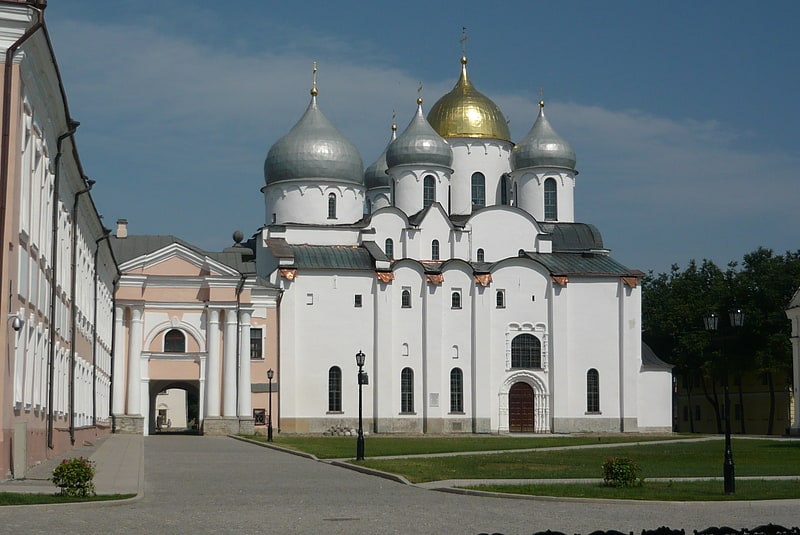
Also known as: Исторические памятники Новгорода и окрестностей
Historic Monuments of Novgorod and Surroundings is a composite World Heritage Site which includes a number of medieval monuments in and around Veliky Novgorod, Russia. The site was inscribed in 1992.[14]
Katholikon of the Antoniev Monastery
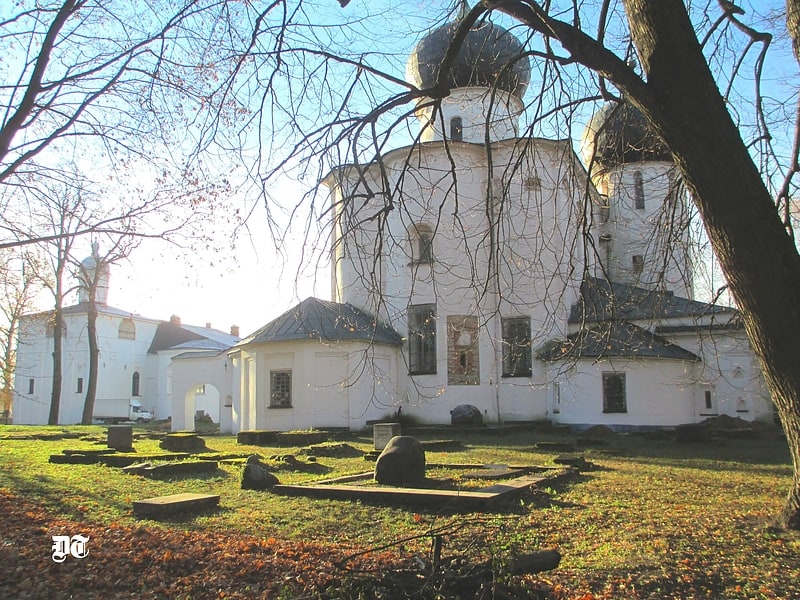
Also known as: Собор Рождества Богородицы
Monastery in Veliky Novgorod, Russia. The Church of the Nativity of the Theotokos is a katholikon completed in 1122 in the Monastery of St. Antony, Veliky Novgorod. Dedicated to the Nativity of the Theotokos, it is one of the few buildings surviving in Russia from the early 12th century.[15]
Volotovo Church

Also known as: Церковь Успения на Волотовом поле
Orthodox church in Volotovo, Russia. The Volotovo Church or the Assumption Church in Volotovo in the village of Volotovo in Novgorodsky District, Novgorod Oblast, Russia was built in 1352. The church was notable mainly for the frescoes presumably made by a disciple of Theophanes the Greek, one of the foremost Russian artists. The church was destroyed to the ground during World War II and restored in the 2000s. Fragments of the frescoes were reconstructed.
The Volotovo Church was designated an architectural monument of federal significance (#5310105000).[16]
Church of the Transfiguration on Ilyina Street
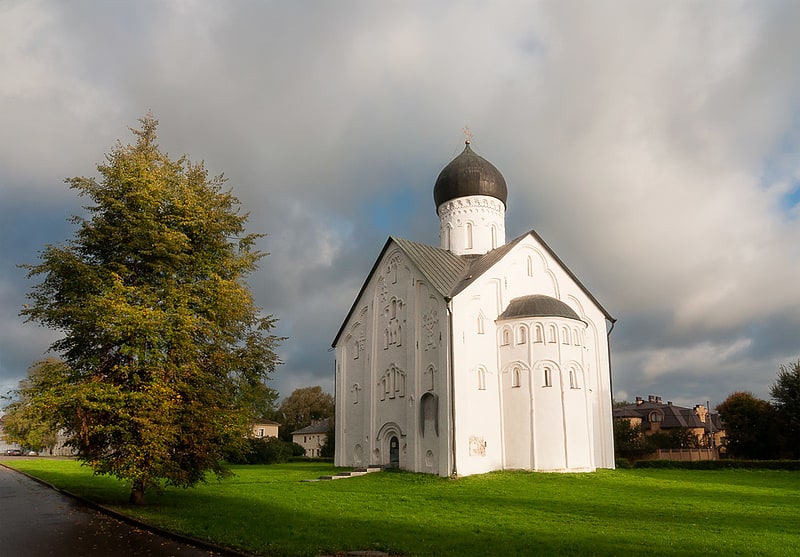
Also known as: Церковь Спаса Преображения на Ильине улице
Museum in Veliky Novgorod, Russia. The Church of the Transfiguration of the Savior is a former Russian Orthodox Church that stands on Ilyina Street in Veliky Novgorod just east of the Marketplace. The current building was built in 1374 and frescoed by Theophanes the Greek in 1378. Substantial portions of those frescoes still remain, including the Christ Pantocrator in the dome, a number of saints inside the south entrance, and The Old Testament Trinity in the western vestry, as well as others. The current building is now a museum, part of the Novgorod State Museum-Preserve.[17]
Znamenskij sobor
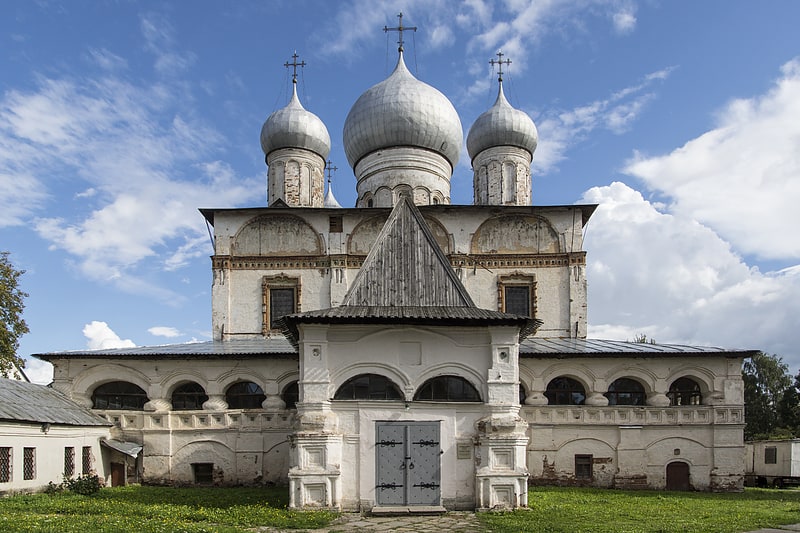
Museum, Church
Address: ул. Ильина, 26, Novgorod
Peryn Chapel
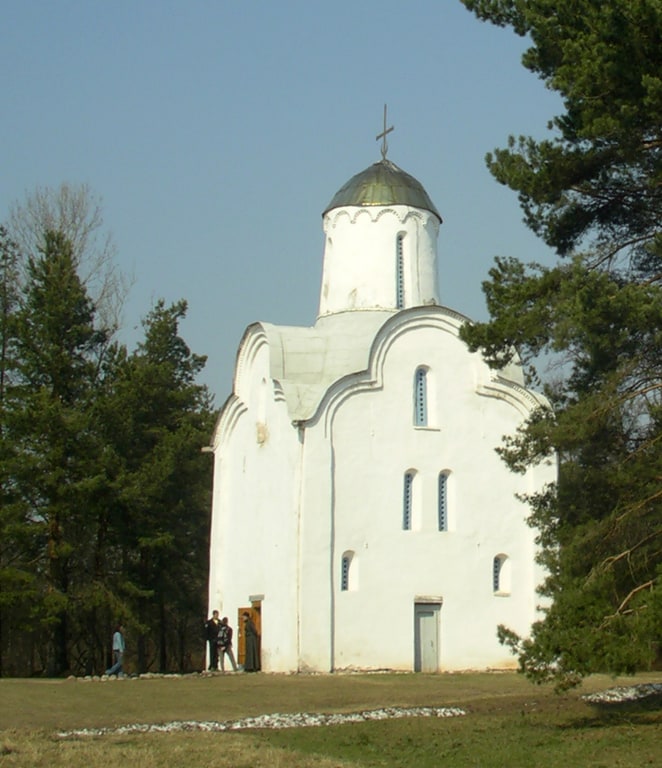
Also known as: Перынский скит
Monastery in Veliky Novgorod, Russia. The Church of the Nativity of the Theotokos on Peryn in the environs of Veliky Novgorod is one of the city's oldest churches, dating from the 1220s. The church is located 6 kilometres from Veliky Novgorod, by the source of the Volkhov River where it flows out of Lake Ilmen. The church is a part of the Peryn Skete, a former monastery abolished in the 18th century, and is the only functioning church in the complex.
The Peryn Chapel is on the World Heritage list as a part of object 604 Historic Monuments of Novgorod and Surroundings. The building has been designated an architectural monument of federal significance.
Presumably, the church was built on a site previously consecrated to the pagan god Perun, hence the name. The first church on the site was built in 991. Later, it became a part of a monastery. The current church was built in the 1220s. It was fully restored after World War II and returned to the Russian Orthodox Church in the 1990s.
The church is built of flat bricks and stone. It has a foundation in the shape of a square. The church has four internal pillars and one dome. It is notable in particular for its small size, measuring only 8 metres in both length and width.[18]
Lipno Church

Also known as: Церковь Николы на Липне
Church in Russia. Saint Nicholas Church on Lipno Island is a late 13th-century Russian Orthodox church sitting on a small island in the delta of the Msta River, 9 km south of Novgorod. Its design harks back to the Nativity Church on Peryn Island.
The main altar is consecrated in the name of Saint Nicholas. A huge icon of this saint (184 cm in height) was painted for the church by Aleksa Petrov in 1294. The fact was notable enough to be mentioned in the Third Novgorod chronicle. This painting — among the most famous of all Russian icons — is now exhibited at the Novgorod Kremlin museum.
In the 18th and 19th centuries, the Lipno church had no parishioners and was almost deserted. After the Bolshevik revolution its belfry was pulled down. A set of 13th century frescoes was discovered under a layer of plaster in 1930. Despite its remote location, the building sustained heavy damage during the World War II, so that about 35% of medieval masonry had to be replaced.
On 6 January 2021, Russian President Vladimir Putin attended a Christmas eve service at the church. It is part of the Historic Monuments of Novgorod and Surroundings, a World Heritage Site inscribed in 1992.[19]